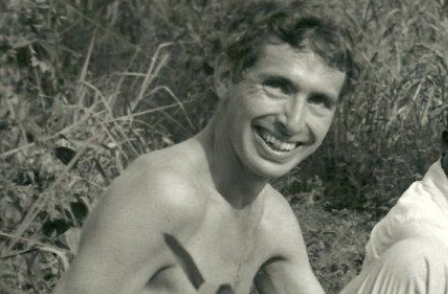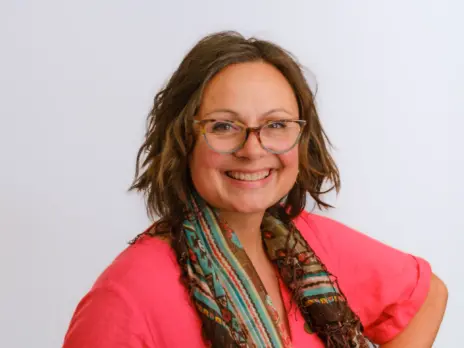
A privately-circulated new book published by Save the Children for its chairman Sir Alan Parker features a selection of the charity’s more remarkable and unsung episodes over its 95-year-history. One chapter features Fleet Street gossip columnist Jack Lundin quitting his job to go to the Biafran civil war, where he defies orders and establishes a chain of nutritional centres along an isolated warfront.
It was the “Swinging Sixties”, with rarely a dull moment on the Town Talk gossip column of the Sunday Express. My perch for the past four years was interrupted on 2 July, 1968 by a report from Biafra in the Evening Standard by Frederick (Day of the Jackal) Forsyth, headlined “Just six weeks left to save 400,000 children like this”, accompanied by a picture of a child with matchstick arms, belly swelled by malnutrition.
Simultaneously, a paragraph appeared in the Daily Telegraph: the Save the Children Fund, as it was then called, was recruiting another relief team to go to Nigeria’s raging civil war. I sprang into a taxi, got myself hired and within days was taking off at dawn from RAF Lyneham in a Britannia of Air Support Command, en route for Lagos.
It all started conventionally enough. There were four of us in our medical relief team: John, our leader and not-long qualified doctor of 27; two nursing sisters (Rita, a feisty 25-year-old from Yorkshire and Margaret, a 42-year-old from a sheltered Christian community); and me, a 29-year-old gossip columnist from Fleet Street, who held the title of supplies and transport officer.
As we waited for the military’s permission to embark by sea for Calabar in the country’s isolated south east, news came that two members of another Save the Children team, just arrived in the Northern sector of Enugu, had been killed when their Land Rover ran over a land mine on a bush road.
Our base was at the then-closed Nigerian Christian Secondary School in the hamlet of Ukpom, outside Abak. For two months, as thousands of children lay dying around us, Rita, Margaret and I conducted clinics around the area: Independence Hall in Abak, the Catholic seminary and so on. The two nurses made the diagnoses while I dispensed tablets, dressed sores and gave injections (procaine penicillin and Vitamin B). John, our doctor and leader, spent most of his time in the military hospital at Anua, practising war surgery on wounded Federal soldiers.
But our clinics failed dismally to meet the massive and widespread child deaths from the protein-deficiency disease kwashiorkor. The answer, I became convinced, was to gather up all the desperately ill and scattered children and install them with their mothers in a string of residential feeding centres across the warfront. By good fortune Dr H.J.L. Burgess, a WHO nutritional consultant, was passing through and he recommended a high protein diet comprised of locally available dried skimmed milk and red palm oil, plus sugar.
Save the Children’s administrator in Lagos, John Birch, was not impressed. “Your plan regarding the nutritional unit is a lofty one but not viable in the Calabar sector because of the distances involved,” he wrote dismissively.
All the relief teams – Save the Children, Oxfam, Salvation Army etc – came under the umbrella of the International Committee of the Red Cross. Mr Sachau, the ICRC area co-ordinator and my immediate superior, was devastated at the appalling child death rate in his sector and shared my vision for residential nutritional centres. He gave me an immediate go-ahead for a pilot unit, which opened within five days, on 4 November, 1968, after easing soldiers out of premises at a defunct hospital at Ikot Okoro. Within days the unit held 100 kwashiorkor children and their mothers.
With Dr John gone – not without a great deal of fuss and trauma – and with orders from Mr Sachau for the immediate establishment of up to six residential nutritional units, I took over the Save the Children team. It now consisted of Rita and myself, plus Andrew Clark from the Quakers and two university students from Ibadan.
However, days later, a surprising note arrived from my harshest critic, the ICRC’s field chief in Lagos, Dr Bulle. He announced he was quitting his job there – to open a nutritional pilot unit “to demonstrate that nutritional work makes sense” and that “integration with national staff is not only possible but does indeed make sense”.
I was flattered at his conversion until he went on to drop his bombshell: he would require my team of Andrew Clark, Alex and Raph to help him with his pilot unit. Nursing sister Margaret had opted to return to her Christian community in the UK, Rita was assigned to open a children’s ward at the defunct Icot Okoro hospital and I was to hand over the Ikot Okoro nutritional centre within three weeks and proceed to the Northern Sector.
Fortunately ICRC area chief Sachau stayed firm. He told me to proceed with the rollout and forget Bulle’s nonsense of a transfer to Enugu. I had lost my team, but I swiftly recruited a new one: all Nigerian schoolchildren, the youngest aged 12, most of them 14 and 15 (the schools were closed due to the fighting).

Within 28 days five residential nutritional centres were in operation, with 500 children suffering from kwashiorkor receiving the life-giving diet drink. With average stays of two to three weeks, in months they were to handle many hundreds of sick children, finally licking the kwashiorkor and multiple child deaths in our sector.
We made our base at the Ntiat unit, a former missionary’s house on a hill, where 15-year-old Paul was supervisor. Oxfam’s nearby doctor and nurses supplied medical supervision. Over the weeks other agencies took over three of our centres, but my little team of schoolchildren soldiered on, running Ntiat and when Swedish Save the Children Fund wanted a unit at Ikpe, just outside the much fought-over town of Ikot Ekpene, they ran that one too.
At 12, and in Elementary 4 at school, Affiong was our youngest volunteer. She kept our paraffin night lamps in sparkling trim and I took her along when I had to meet particularly difficult and volatile army commanders at the front. Affiong’s charm always won them over. Alice, the oldest at 18, continually wore the bra I found for her in a Red Cross clothes bundle. She kept getting captured by Federal soldiers and dragged off to the front, and I had some narrow scrapes rescuing her.

Mrs Okpok arrived with her ailing baby son Kofon and after his death stayed on to help. Peter (so proud of his Red Cross badge), Sarah and John completed the team.
All were volunteers, and received no pay. Paul and Imoh, also 15, were my main support. Imoh became such a skilled translator that I was able to carry on conversations at lightning speed with the sick children and their mothers. As I noted at the time: “It was due to the loyalty and assistance of these two Abak schoolboys that our programme was able to continue after we lost the rest of our team.”
I became something of a Scarlet Pimpernel, dodging on bush roads between my centres as ICRC in Lagos dispatched emissaries to haul me from the field. Mr Sachau always tipped me off when they were coming. Save the Children’s new administrator in Lagos, Geoffrey Allsebrook, wrote desperately seeking “clarification of your position regarding which reports are somewhat conflicting”.
Relief workers are not supposed to have favourites. But then I wasn’t a proper relief worker. Mine included David, a little boy who found his way to the Ikpa unit with his left arm almost severed from his body after soldiers forced him to climb a palm tree for coconuts. He fell, landing on the spike of a cut down tree. We bonded on a scary dusk drive through a series of stoned soldiers’ checkpoints to the Oxfam doctor, who sewed the arm back on again in the middle of their party for the local army commander.
Then there was Nyong, a little girl who appeared one day as a lone, slowly-moving dot on a dusty track. Shrunk almost to nothing, she was crippled by marasmus and could not stand, so her progress was a slow shuffle on her behind. In her hand she grasped a leaf with three or four pennies inside, which she pressed on me for payment.
As Nyong grew in strength her body straightened and every evening we took a sedate stroll to the nearby stream where the other children were bathing. But she never smiled. When I was finally pulled out, suffering from pleurisy, my last words to her were: “Try to smile, Nyong.” A month later Mrs Okpok wrote to inform me of her baby Kofon’s death and added: “Your Nyong is now doing fine. She takes a bath herself, washes plates, plays, laughs, eats and drinks the diet about two to three cups at a time. She is really fleshy. She said she’ll like to go home.”
After his spell with Save the Children Jack Lundin returned to journalism and worked for titles including Private Eye and The Observer. He now lives in South Africa and until 2012 was Johannesburg bureau chief for Noseweek, South Africa’s investigative monthly magazine.
Email pged@pressgazette.co.uk to point out mistakes, provide story tips or send in a letter for publication on our "Letters Page" blog






